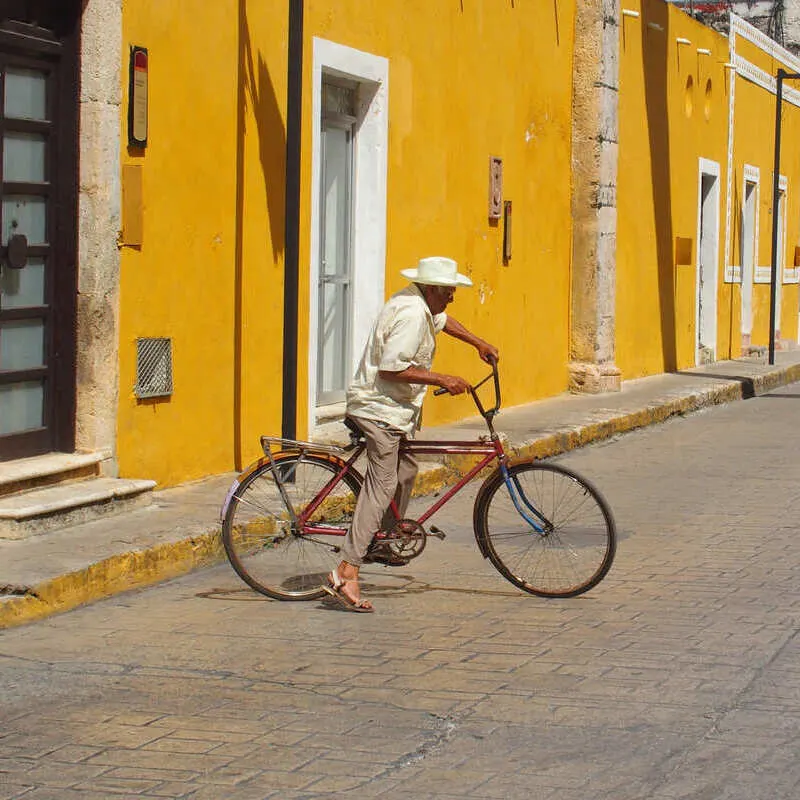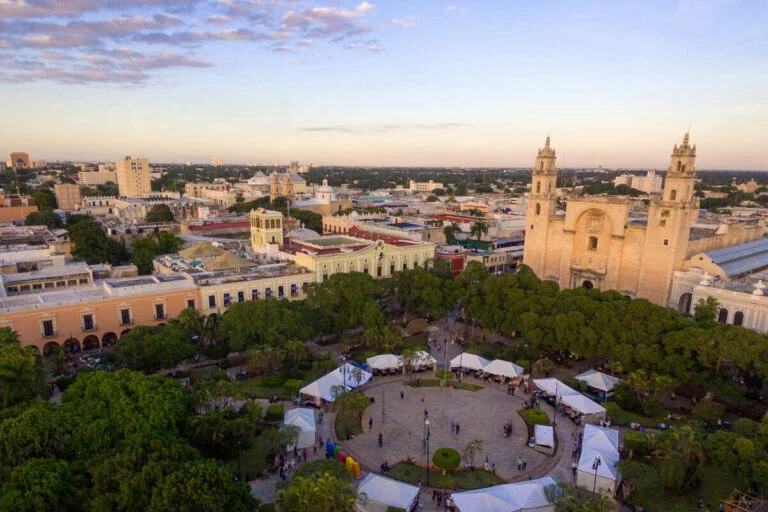Mexico has always been, and probably will always be, America’s number one leisure destination: for many U.S. citizens, the country’s pristine oceanfront, bounded by either the Caribbean or Pacific, is the only form of relaxation they will get on a calendar year.
They have been flocking into the Hotel Zones in Cancun and Los Cabos for years in search of that ultimate tropical getaway, and based on booking trends this winter, it’s safe to say the popularity of those destinations is unlikely to dwindle anytime soon.
In recent months, however, demand for 3 alternative destinations that do not straddle the coast, and are not your typical resort hotspots has grown, so much so that the average time of sojourn in one of them rose from a single overnight to 2.5 nights.
Tourists are not only adding these once-ignored historical destinations, but are in fact looking to stay longer in 2024 to sample their colorful culture, and we know just the reason why:
Why Are These Three Historical Cities Bracing For A Popularity Surge?

According to Diario de Yucatan, a leading online newspaper covering developments in the Yucatan Peninsula, the triad of small cities Izamal, Merida and Valladolid are bracing for a surge in tourism this year, with the latter in particular succeeding in becoming more than a day trip destination.
Tourists now spend an average two and a half nights in Valladolid, while Izamal has also seen an uptick in longer stays, as tourists will often make a stopover there before traveling onward to Merida, the largest of the three, and the cultural capital of the Yucatan Peninsula.

Speaking of which, culture is the huge draw for tourists here: Mexico may be best associated with laid-back sunny getaways and luxurious listings, and we’re not disputing the fact Americans love it for these exact same qualities, but it’s clear to us at this point a growing number of them wants something more.
More of Mexico’s true, unpolished self, where tourism is not at the forefront of the economy, but it’s only one facet of it, away from the overdeveloped shores of Cancun and the increasingly internationalized Mayan Coast. After all, isn’t cultural immersions what going abroad’s all about?
Let’s start with Merida.

A Beautiful Colonial Era City And Foodie Hotspot
Merida is one of the largest and best-preserved colonial-era cities in Mexico. Settled in the 16th century, it evolved to be an important hub for commerce in Hispanic America, and it retained its historical relevance well into the modern era.
Of course, Spanish settlers did not set out to create a fairytale town when building Merida from the ground up – it was merely somewhere they lived and conducted their daily affairs – but from a 21st-century visitor’s perspective, it might well have been idealized as an open-air museum.

With its cobbled streets, centuries-old mansions, landmark cathedral, and historical Christian shrines where every single element in display is unique and tells a story, it serves as a window into times past and a reminder of the grandeur of the bygone Spanish Empire.
Merida’s also famous for its rich cuisine, combining elements of both native Mayan and Iberian diets, and the development of a new Gastronomic Corridor, highlighting restaurants that are known to keep the tradition alive, is yet another reason why tourism is expected to grow in 2024.

A Yellow-Washed Small Town Dotted With Ancient Ruins
Next on the list, Izamal is a smaller colonial settlement, famous for being the home of the mythical City of Hills, the site of a Mayan pyramid, and San Antonio de Padua Convent, a religious effort finished in 1561, that stands among Yucatan’s most striking monuments.
As you might have guessed, it’s a place where Mayan and Spanish heritage coexist, as unusual as it may be, and a top destination for Instagrammers due to its postcard-ready, ‘aesthetic’, townscape: a majority of towns are painted vibrant yellow.

Other than being simply gorgeous, Izamal lays claim to being one of Mexico’s ‘O.G.’ Pueblos Magicos. The designation, which seems to just be ‘thrown around’ at random lately, was previously conferred upon select towns with a significant historical value.
In Izamal’s case, that value was asserted as early as 2002, when the list of ‘magical towns’ was still restricted, and long before the status became overused by lesser townships with a less-than-impressive tourist offer keen on securing funds from the Ministry of Tourism.

A Historical Town Within Driving Distance Of Striking Mayan Ruins
Lastly, Valladolid is expected to ride on the incoming wave of popularity of Yucatan’s historical cities thanks to its off-path appeal and ancient charm. Most visitors to Mexico heading straight for the Mayan Coast would typically ignore it altogether, but this could change in 2024:
According to Alfonso Rivero Flores, a leading figure in tourism in Valladolid, this hugely underrated gem combines all that is great about the ethno-region of Yucatan: Spanish cathedrals, unspoiled cenotes, Mayan ruins, and gastronomy.

As Flores stated himself, besides housing the majestic San Gervasio Cathedral, an icon of Mexico that should definitely make your bucket list this year, Valladolid is a stone’s throw away from two of the most important archaeological zones in the country, namely Chichen Itza and Ek Balam.
It’s no surprise it ranks amid the ten most visited ‘Magical Towns’ in Mexico: out of an ever-growing list that already includes 132 towns, Valladolid is the fourth best-performing one, charting higher even than Izamal, or the incredibly trendy Isla Mujeres, off the coast of Cancun.

Bottomline
As you can see, all three destinations are very distinct in character, but there is one invisible link tying them together: they are gateways into a more authentic, less touristy Mexico.
The type of traveler who will get out of their way to visit Merida, Izamal or Valladolid when landing in Cancun is actively looking for more diversity, and their idea of fun is not lounging by the poolside all week or gorging nonstop on a round-the-clock buffet.

Luxury resorts are great, and they are a huge draw for vacationers, but in this next phase of Mexico’s Tourism Reinassance, it’s all about meaningful experiences, and we can definitely see how these three hotspots could be stealing the limelight in the near future.
With the launch of the Maya Train, which is set to connect Cancun to all three of them, it will become even easier to combine a relaxing beach getaway with a culture-infused day trip. Tickets are being sold right now, and the long-awaited new segment to Palenque has just opened.
Credit: Source link

